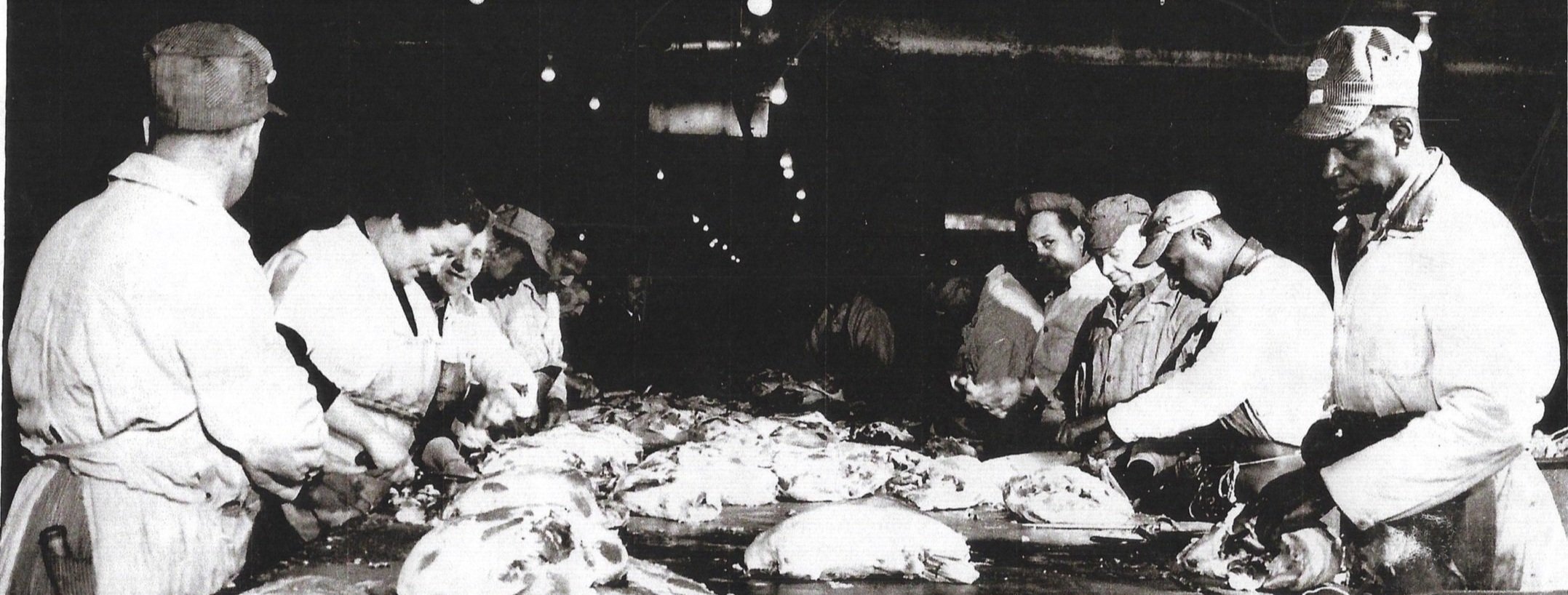
The People of the Stock Yards
Since the opening of the Union Stock Yard in 1865, the livestock market and packinghouses attracted a diverse population of workers and others to the neighborhoods surrounding Packingtown. Wave after wave of European immigrants joined native-born Americans, both Black and White, in the neighborhoods of Bridgeport, Canaryville, Back of the Yards, McKinley Park, Bronzeville, and other South Side areas.
In the early years of the stockyards, U.S.-born Whites settled in the area. Large numbers of Irish, German, Austrian, and Czech immigrants soon joined them and found employment in the meat industry. These groups quickly dominated the workforce. During the late 1880s, Polish immigrants arrived in large numbers in Back of the Yards and Bridgeport. By World War One, they came to dominate the immigrant population of Back of the Yards while Lithuanians, Slovaks, Carpatho-Rusyns, Russians, Ukrainians, East European Jews, French Canadians, and others settled in the neighborhood. African Americans entered the packinghouse workforce in the early 1900s. During World War One, their numbers increased and continued to grow until 1960, and they largely settled in the Bronzeville neighborhood. In the 1920s, Mexican immigrants and Mexican Americans joined the ethnic mix of the neighborhood. The Mexican immigrant population faced forced repatriation during the Great Depression and began to grow again during WWII. By the late 1950s, more than eighty percent of packinghouse workers were people of color, primarily Mexicans and African Americans. Today, Back of the Yards continues to thrive as a Mexican/Latino community while having remnants of its Slavic roots. The African American community continues to grow, particularly at the neighborhood’s south edge.
Below is a collection of stories telling the personal experiences of families who came to the Stock Yards to work, and to Back of the Yards to live.
More stories will become available online as this exhibit is digitized, and please contact us if you are interested in contributing content to this exhibit.
-

Mexican Family Stories
Several stories of Mexican immigrant families describe ties to local businesses Peer Foods, Schulze & Burch Biscuit Co., and Armour & Co., as well as day-to-day life in Back of the Yards.
-

Polish Family Stories
Multiple stories of Polish immigrant families overview life in Back of the Yards, with family members holding jobs in the Peer Food plant, Swift lard refinery, and elsewhere in the Yards.
-

An African American Worker & Organizer
Born in Alabama, Jesse Vaughn moved to Chicago during the Great Migration, worked in the Yards in a role uncommon for Blacks, and served as a union organizer.
-

A Lithuanian Jewish Family Spotlight
Born in Lithuania and trained as a shochet (Yiddish for ritual slaughterer and butcher), David Isaac Cohen immigrated to the U.S. and found work in the Stock Yards.
-

Irish Immigrant Stories
Stories address sixteen Irish women who founded a union in 1900 as well as an immigrant family’s experience. Above: Irish women during the 1904 Stockyards Strike — Chicago Daily News collection, Chicago History Museum DN-0000984.
-

A Lithuanian Catholic Family Spotlight
These stories describe a Lithuanian family’s experience living and working in Back of the Yards and the importance of the Holy Cross parish in the community over the years.
-

German Community Stories
German families began settling in Back of the Yards in the 1870s, and several of their religious landmarks are still important in the community today.
